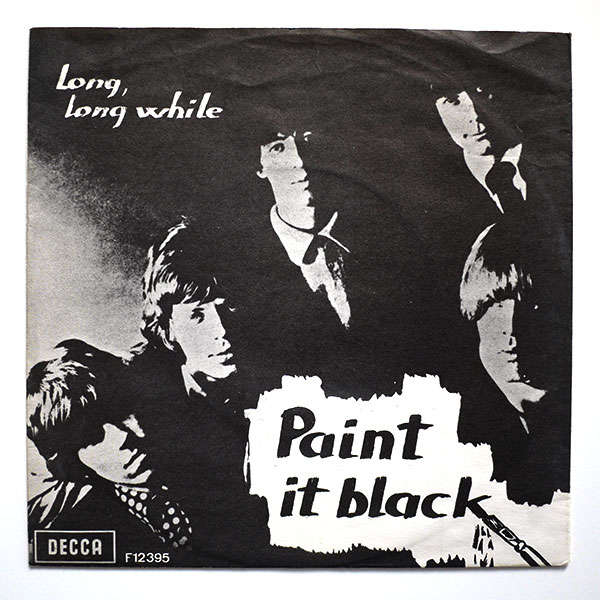

Wyman's playing clicked with the group, and inspired the up-tempo and Eastern pentatonic melody. However, while twiddling with a Hammond organ, Bill Wyman searched for a heavier bass sound, while playing the part on his knees.

Much of the early recorded arrangements, and keys of the track were modeled after The Animals' version of " The House of the Rising Sun", but The Rolling Stones were unsatisfied with the song, and considered scrapping it. The master take of "Paint It Black" was recorded on 8 March 1966, at RCA Studios in Los Angeles, with record producer Andrew Loog Oldham present throughout the process. Not long after a discussion with George Harrison, who had recently recorded sitar in " Norwegian Wood", Jones arranged basic melodies with the instrument that, over time, morphed into the one featured in "Paint It Black". A natural multi-instrumentalist, Jones was able to develop a tune from the sitar in a short amount of time, largely due to his studies under Ravi Shankar's disciple, Harihar Rao. Jones had a background with the sitar as early as 1961, and talked at length about the technicalities of playing the instrument. To alleviate the boredom, Jones explored eastern instruments, more specifically the sitar, to bolster the group's musical texture and complexity. In addition, Brian Jones, overshadowed by Jagger and Richards, grew bored with attempting to write songs, as well as conventional guitar melodies. This is evident in the Aftermath sessions, where, for the first time, the duo penned the complete track list. "Paint It Black" came at a pivotal period in The Rolling Stones' recording history, a time that saw the songwriting collaboration of Jagger and Keith Richards assert itself as the principal composer of the band's original material. It was their first song to feature a sitar instrumental. The song itself came to fruition when rhythm guitarist Brian Jones took an interest in Moroccan music. It is often claimed that Jagger took inspiration from novelist James Joyce's 1922 book, Ulysses, taking the excerpt, "I have to turn my head until my darkness goes", referring to the novel's theme of a worldwide view of desperation and desolation. The song sets the scene of a mournful partner at a funeral, similar in terms to a blues or folk number. Initially, "Paint It Black" was written as a standard pop arrangement, humorously compared by Mick Jagger to "Songs for Jewish weddings". The song's lyrics are, for the most part, meant to describe bleakness and depression through the use of colour-based metaphors. Since its initial release, the song has remained influential as the first number one hit featuring a sitar, particularly in the UK where it has charted in two other instances, and has been the subject of multiple cover versions, compilation albums, and film appearances. The song became The Rolling Stones' third number one hit single in the US and sixth in the UK. "Paint It Black" reached number one in both the Billboard Hot 100 and UK Singles Chart. It was later included as the opening track to the US version of their 1966 album, Aftermath. " Paint It Black" (originally released as " Paint It, Black") is a song by the English rock band The Rolling Stones, written by the songwriting partnership of Mick Jagger and Keith Richards, and first released as a single on. "Paint It Black"įrom the album Aftermath (American version)Ĩ March 1966, RCA Studios, Hollywood, California For other uses, see Paint It Black (disambiguation).


 0 kommentar(er)
0 kommentar(er)
